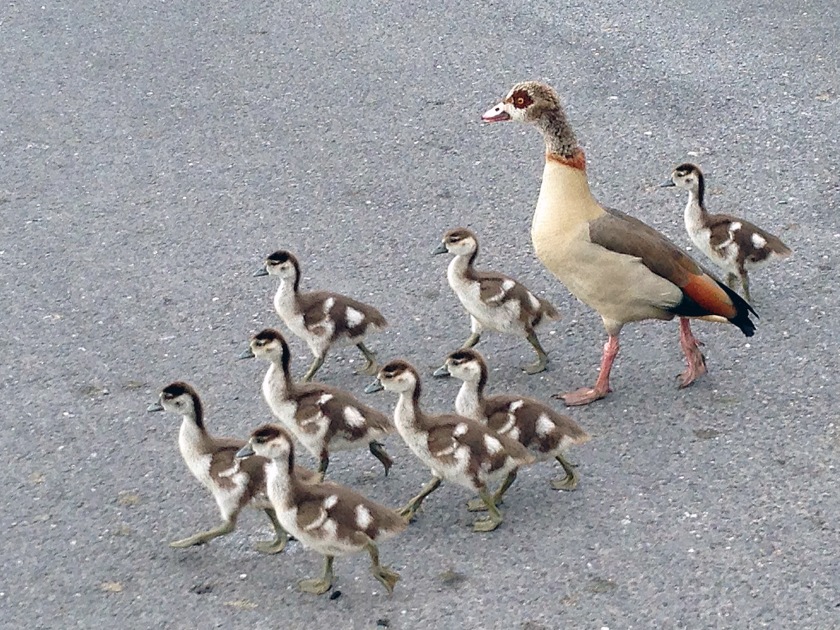
Albeit only in small numbers, the Egyptian Goose (Alopochen aegyptiacus) has become a regular visitor to my local birding hotspot at north-west London’s Brent Reservoir.
Until recent years sightings of this pan-African species would have been noteworthy, since before the 21st century there were only five records for the reservoir — one shot in 1888 and four single sightings in the 1980s and 1990s.
However, during the current century reports have steadily increased. For the past few years there has been at least one sighting every month except March. (Where are they that month?) And in 2015 a pair nested, producing five young — although the goslings were seen only once and so may well have perished.
At the moment (November 2017), a family group of three birds roosts together every night in the reservoir’s northern arm, flying off north-west at dawn, although no one knows where they spend the day.
The Egyptian Goose is a pale brown and grey bird with distinctive dark brown eye-patches, a dark brown breast patch and white wing patches that are prominent in flight but not visible in repose. It is most closely related to the shelducks, with which it forms a subfamily somewhere between the true geese and the ducks.
Egyptian Geese were first introduced into England in the 17th century to grace the lake at Holkham Hall in north Norfolk. As with other ornamental wildfowl (such as Black Swan, Canada Goose and Mandarin Duck), some went AWOL when park keepers failed to keep their flight feathers clipped. The absconders bred successfully and established a feral population in the Norfolk Broads. Eventually they spread south across East Anglia and into areas of south-east England. The number of breeding pairs in England is now estimated at 1,000 or more.
About 20 years ago Egyptian Geese started to invade the capital, particularly in west and south-west London, where they can now be found regularly in several suburban parks and wetland areas. So far as I know, Brent Reservoir is one of only two sites in north-west London where they are regularly seen, the other being Totteridge Valley. This year (2017) a pair nested successfully on the southern edge of Totteridge Valley and raised their young around the Angel Pond in Mill Hill, where I was able to photograph Mother Goose with her eight goslings.
One thought on “Out of Africa — the Egyptian Goose”